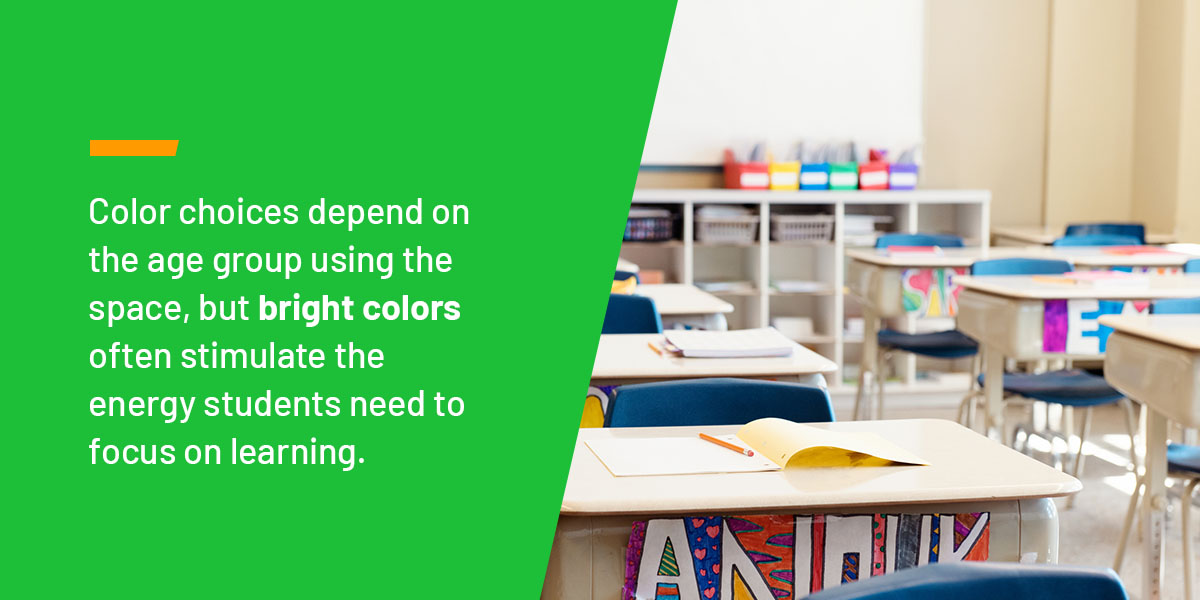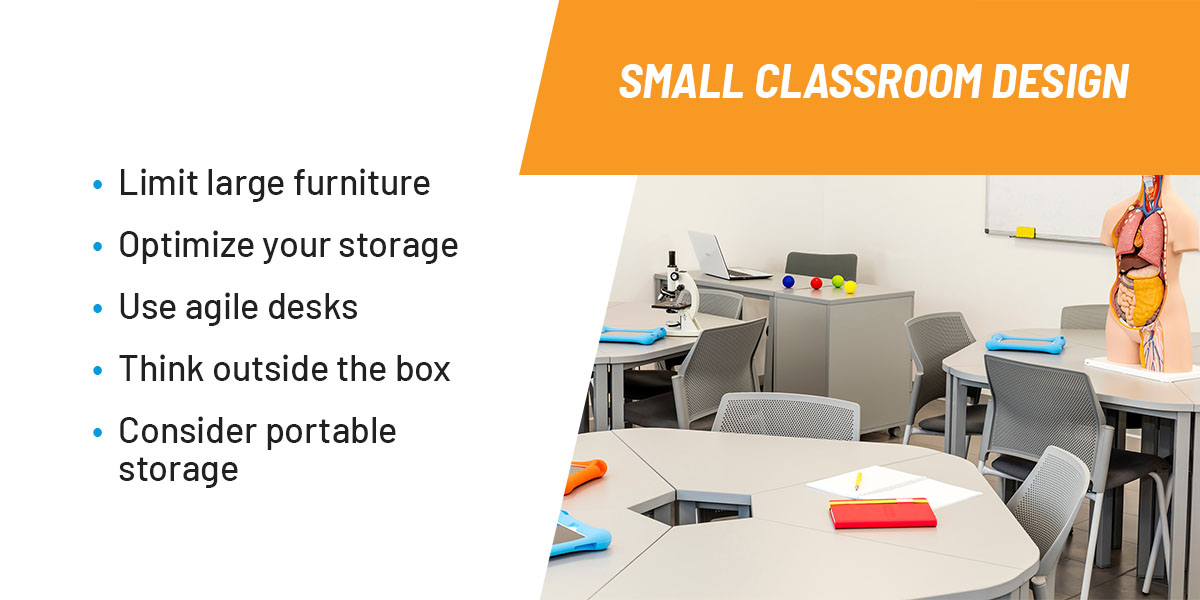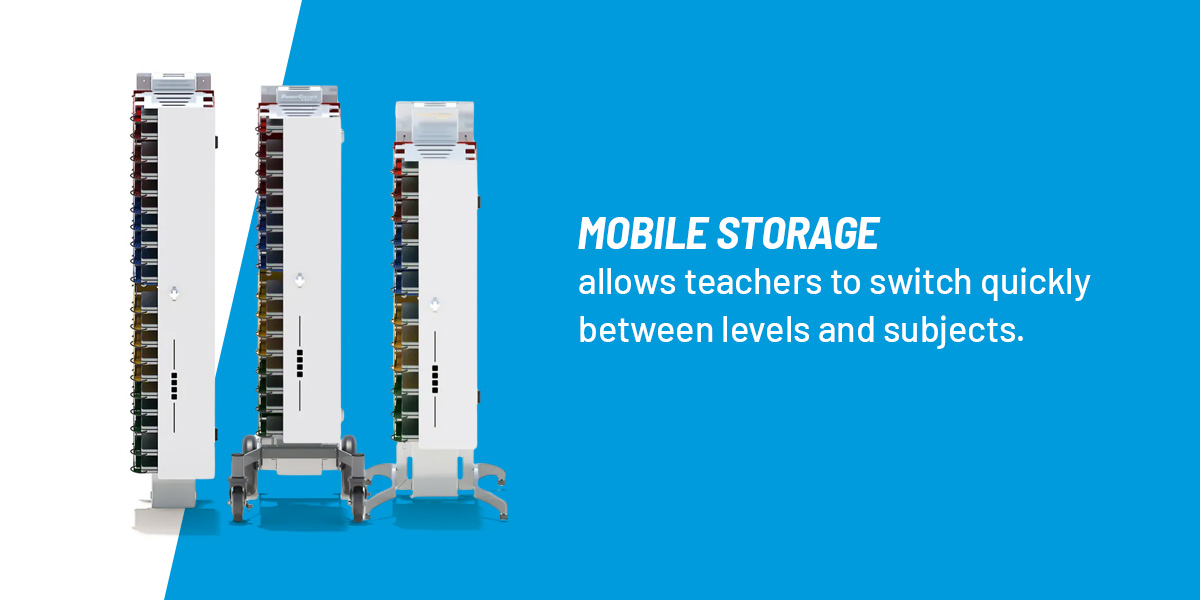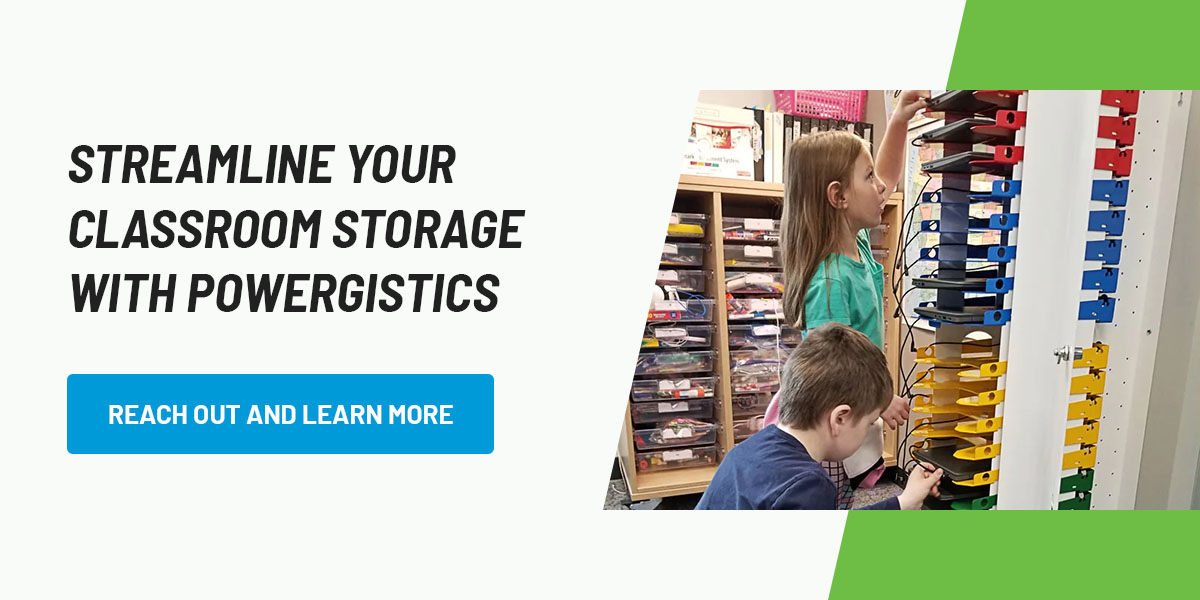Classroom Layouts for Effective Learning
Children over the age of five spend an average of six hours a day in school. It takes a comprehensive strategy to keep them comfortable and engaged enough to learn. Classroom design is an essential part of that strategy.
Seating and computer use are the two main elements of successful classroom design, and both can be challenging. Optimizing classroom space is crucial to getting the most out of every classroom, especially in innovative and technology-focused schools.
The Impact of Classroom Layout on Learning
Classroom design has a significant influence on student engagement and concentration. A well-designed classroom can foster creativity and encourage collaboration. The addition of technology at the curricular level has challenged traditional classroom design and layout, encouraging school decision-makers to explore more organized and accessible options.
Lack of attention to classroom layouts can confuse students, damage equipment and limit productivity. An effective classroom setup is more than seating arrangements. Taking a holistic approach to layouts is often the most effective method of maximizing classroom space. School leaders can create an ideal environment by considering all aspects of the class, from storage and accessibility to ergonomics.
Factors to Consider in Classroom Design
Intentional classroom design can transform the learning experience. Any layout should reflect the purpose of the space and meet students’ needs. Consider how and where different students like to learn and why. Defining the area’s goals inspires how each classroom functions to encourage communication, collaboration and critical thinking. Some common classroom design considerations include:
1. Comfort and Ergonomics
Students learn better when comfortable, and creating a physically and psychologically comforting classroom is essential. Poor ergonomics can cause musculoskeletal disorders. Consider the height of the desks and chairs and ensure students can see teachers and educational materials without having to shift positions or crane their necks. Use color to limit stress and boost concentration. Color choices depend on the age group using the space, but bright colors often stimulate the energy students need to focus on learning. Add school spirit to your classrooms and device storage with custom colors from PowerGistics.

2. Adaptability and Flexibility
Classrooms are dynamic places and students often learn better when they have options. A functional classroom layout balances the flexibility of varying learning models and the structured division of zones to minimize disruption.
Integrating technology into the classroom is an excellent example of the need for a flexible learning space. Students may jump from laptops to practical applications in lessons. They need access to the different learning tools in the environment without confusion or loss of productivity.
Classrooms should also be adaptable to accommodate changes in educational programming like classroom desk spacing to include children with disabilities. Students should be able to move throughout the space with limited traffic to ensure they can spend their time focused on the learning experience.
3. Technology Integration
The benefits of integrating technology in the classroom are well-documented. It can facilitate questioning, encourage self-expression and boost teaching productivity. Despite these advantages, incorporating technology requires adjustments to overall classroom design to prevent unproductive scrambling for devices, damaged equipment and confused students.
When you keep classroom design human-centered, it eliminates distractions and provides teachers and students with innovative learning tools. Making technology tools easy to store and access is critical to successful classroom design.
Classroom Layout Options for Effective Learning
Seating location impacts student success in the classroom. Teachers can boost engagement and collaboration simply by changing the seating arrangement. For example, a traditional classroom desk arrangement with students sitting in rows facing the front focuses all the attention on the teacher. Students focus on the course material, limiting conversation. A round table seating arrangement focuses on student and teacher engagement.
Different classroom layouts have specific applications and advantages. Some standard options include:
- Traditional: This arrangement minimizes student communication and supports complete focus on the teacher, which is beneficial when covering technical topics. However, front-row students tend to be more engaged than their counterparts.
- Round table: You can create this setup by moving desks together. The teacher and students sit around one table, facing each other, encouraging discussion and collaboration.
- Horseshoe: This semicircular setup balances the traditional and round table formats, encouraging student discussions and allowing focus on their instruction. Teachers have more freedom to move between desks.
- Pods: When possible, seats are arranged in groups or pods to boost collaborative learning. Teachers can divide classes into pairs or manageable groups and subdivide desks into rectangular, circular or trapezoidal shapes. Students can swivel their chairs to face the teacher for instruction and then turn and face each other when it’s time to collaborate.
Flexible and modern classroom design is essential to facilitate cooperative learning and boost student engagement. Ideally, seating arrangements should be easy for teachers to adjust to accommodate various goals and get the best from students regardless of the context.
Navigating Common Classroom Layout Challenges
Every learning space has benefits and limitations, and knowing how to enhance one and minimize the other is vital. You can navigate many classroom layout challenges with some classroom space ideas and extra inspiration, including:
Small Classroom Design
Small classrooms can create an intimate learning environment but also cause bottlenecks as students and teachers attempt to navigate the room. Optimize any limited space with these small classroom ideas:

- Limit large furniture: Large pieces can make a room feel small, and many students prefer smaller, more functional options. Open up a small classroom by ditching bulky and unnecessary items.
- Optimize your storage: When setting up a small classroom, storage can interrupt classroom flow. If it’s clunky, difficult to move or rarely used, consider a more streamlined option or remove it altogether.
- Use agile desks: Small, mobile desks are easy to rearrange to suit the type of work, allowing teachers to construct engaging layouts for different activities.
- Think outside the box: Only some classrooms need desks and chairs for every student. Depending on the activities, you can use various furniture options to encourage movement between different spaces.
- Consider portable storage: Mobilizing resources allows teachers to add and remove them as needed. For example, keeping younger kids’ art supplies on a mobile trolley keeps the classroom tidy and makes it easy for kids to access and return them while freeing up space when they aren’t needed.
Technology Complications
Technology-rich classrooms are a perfect opportunity to practice human-centered design. Students can only gain the maximum benefit from digital tools when they’re accessible and easy to store. Charging and storage are the two most important factors when integrating technology in a classroom layout. When you have these elements covered, you can tackle the following challenges:
- Cable placement: Traditional laptop carts and other storage solutions can be challenging in a classroom. Charging multiple devices in the same place causes tangled cables and confusion about which charger belongs to which student. Students may miss learning opportunities while waiting for devices to charge. Implementing practical storage and charging tools can eliminate many of these pain points and make teaching tools more manageable for teachers and students.
- Safe device handling: When students grab their devices from a laptop cart, they can drop and break them, resulting in damaged hardware and cracked screens, rendering devices unusable. Practical layout and spacing of devices boost accessibility, making it easier for students to remove their devices without damaging them and incurring additional costs.
- Accessible devices: Consider the accessibility of devices in your current classroom layout. Students need seamless access to devices, whether in groups or independently. Using innovative storage and charging solutions maximizes your space. Portable solutions can help teachers optimize their classrooms and remove devices when needed.
- Loss and theft prevention: Disorganized laptop carts can make it challenging for teachers to monitor devices. Students may take devices home or forget to return them as they rush to their next class. Organized storage and charging simplify device monitoring, allowing teachers to manage their use better and reduce missing resources from the premises.
The Importance of Innovative Classroom Technology Storage
Innovative storage can prevent traffic jams and elevate classroom organization, saving time and allowing students and teachers to focus on their tasks.
When every student has a digital device, storage can be a significant challenge, detracting from the benefits technology brings to your school. They need practical storage and charging solutions for their classroom devices.
Innovative storage for laptops, tablets and other devices can transform your classroom layouts, and PowerGistics charging stations can boost student safety and streamline teaching processes. They offer numerous benefits in a busy classroom, from quick deployment so students can return or retrieve devices quickly and safely to a sleek vertical design that takes up less than half a square footage of space. Teachers can adapt the design with accessories like stands, rollers and wall mounts to make them work in any classroom.
Split deployment is ideal for optimal time savings. Multiple towers per classroom split up deployment stations, eliminating bottlenecks and allowing students to return and retrieve devices faster. Return of devices can happen in between the bells, which means classroom time is reserved for learning.
Storage is always a priority in the classroom, and storage needs differ depending on the space’s age group and primary function. Some storage tips and tricks for different classroom functions include:
Multigrade Classrooms
Shared or multigrade classrooms have unique challenges due to space and time constraints. They must manage many different teacher, supply and storage requirements without impacting teaching time. Multipurpose items and mobile storage are vital in this setting.
Mobile storage allows teachers to switch quickly between levels and subjects. Options on wheels keep each class’s supplies contained, organized and accessible. You can purchase purpose-built mobile storage or add wheels to the existing furniture in the room. Mobile charging carts, cubbies, wheel storage cabinets and rolling filing carts are all excellent options.

Some other options for multigrade classrooms include:
- Use the same items for various purposes: Teachers can work together to implement practices like writing on their sides of the board for continuity and sharing supplies to save space.
- Keep the same desk setup for each class: Agreeing on a layout can save teachers time rearranging after each class transition.
- Consider a coding system: Names and coding systems can help separate supplies and create a simple design that works across all grade levels. Color coding by class makes the equipment easy for any age group to identify, and having students come up with fun group names based on their assigned color can get them excited and involved in the process.
High School Classrooms
High school students have more autonomy than younger kids. They’ve developed their preferences, often bring their supplies and appreciate teachers assigning them freedom and responsibility. High school storage may work better in neutral shades to prevent distractions. For example, red and yellow can increase stress levels, while cooler shades like blue and green help people feel comfortable.
A mature classroom layout is also an ideal opportunity to replicate the environment students may find in the workforce by removing brightly colored baskets and replacing them with office-like storage options. The following tips can help teachers keep the classroom organized and encourage self-sufficient highschoolers:
- Use inboxes: Instead of collecting work from students, they can place them in an inbox to make them responsible for handing in the work.
- Have file folders for each student: Let students access their graded work through file folders, again making them accountable for their work and helping teachers stay organized.
Elective Classrooms
Specialty subjects like art, music, woodworking and culinary arts have unique storage needs. As most of these classes involve more student participation and supplies than traditional coursework, the storage solutions should meet these requirements. Consider these tips to streamline elective classroom storage:
- Integrate rolling carts: Teachers can store supplies and transport them from a rolling cart, making them more accessible to students.
- Mobilize heavy machinery: Some elective courses require heavy equipment. Wheels and carts make musical instruments and heavy woodworking machinery easy to maneuver.
- Keep students accountable: Specialty classrooms are often messier than traditional ones. Distribute supplies to specific areas and assign them to different groups responsible for keeping that area clean and returning the supplies.
How to Implement Effective Classroom Layouts
Effective classroom layouts can solve many pain points for teachers, allowing them to focus on engaging students and providing the best learning experience. Optimizing your available space requires collaboration between teachers, school board members and IT directors so everyone understands how to address challenges at different grade levels. Test your layouts and encourage teacher feedback to refine the learning experience.
Another element of implementing the most productive classroom layouts involves professional development for teachers. Giving them access to the best technology to assist in classroom layouts and technology training is vital to keep them motivated and identify opportunities for improvement.
Streamline Your Classroom Storage With PowerGistics
The right classroom layout elevates the learning experience for teachers and students, and integrating technology into your classroom design can transform each room into an organized, flexible environment geared toward the students. PowerGistics can help you incorporate innovative solutions to enhance your school and tackle the daily challenges that teachers and students face.
Our cutting-edge storage and charging solutions will simplify cable management, boost student and device safety and elevate classroom organization. With PowerGistics, teachers can maximize their time, keep students organized and maintain security, helping your school cut costs and create a unique learning experience. Reach out and learn more about saving time and space in your classrooms today.
